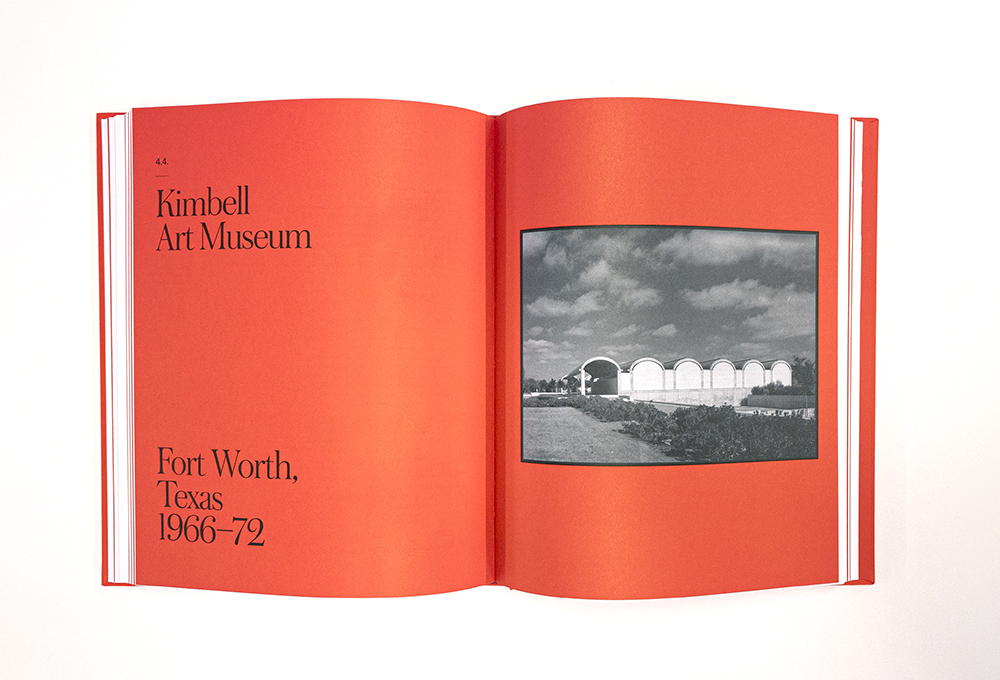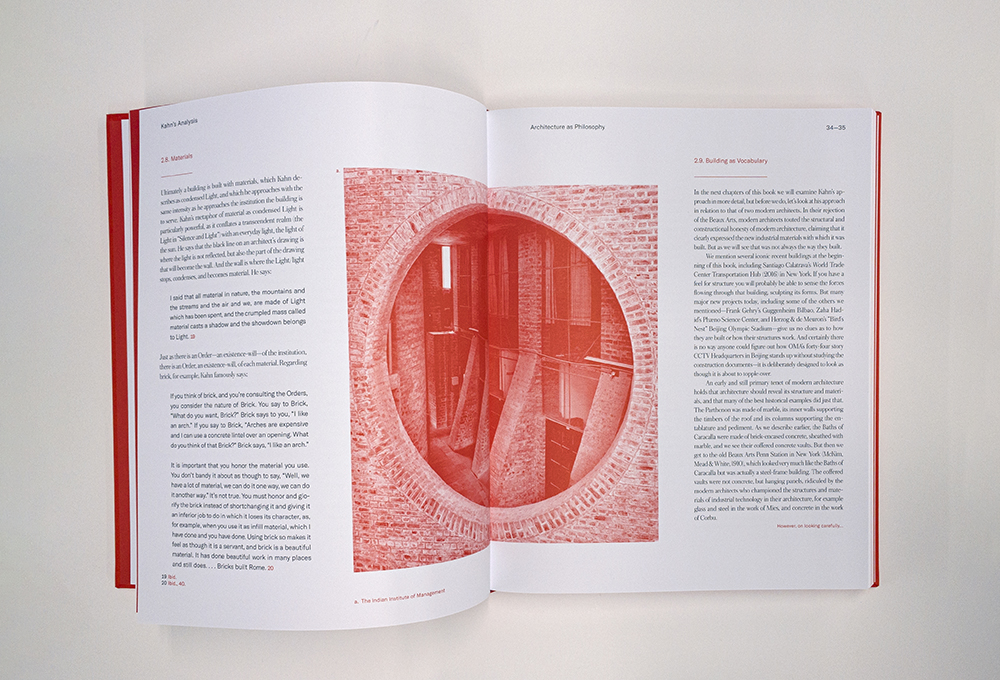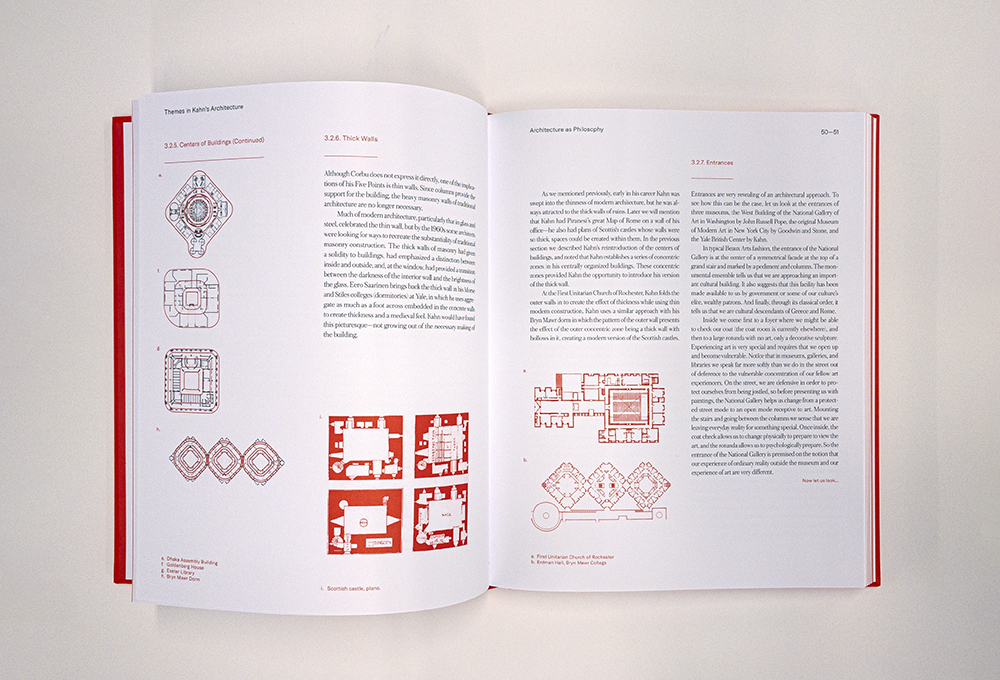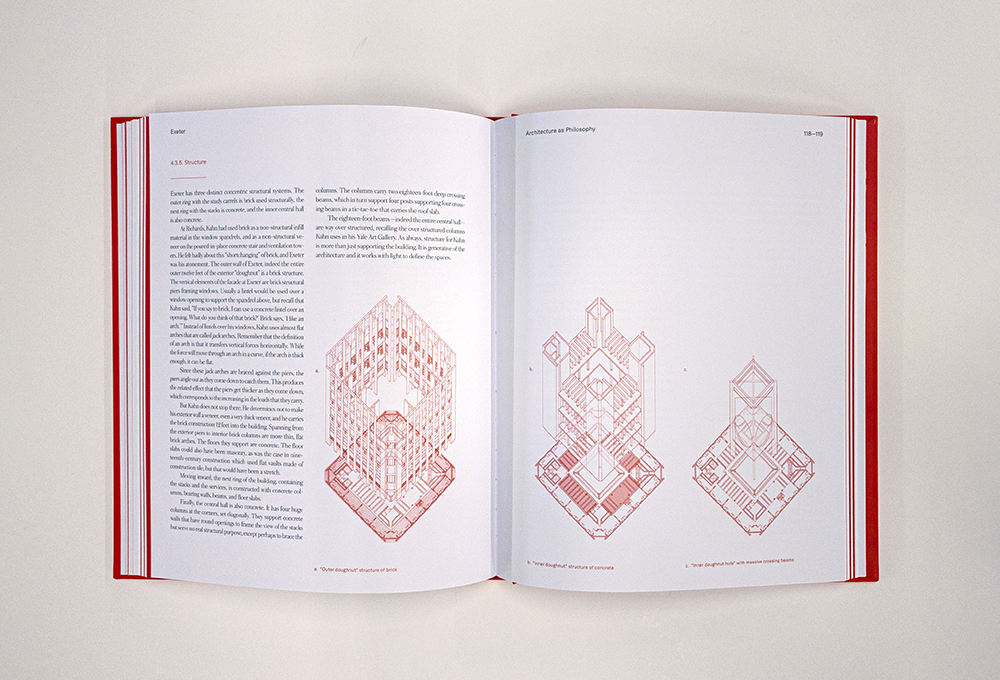
| Client | Monacelli |
|---|---|
| Location | boston |
| Tags | Book Design |
| Status | Complete |
Black type enters from a red field, a drawing de-bossed into the background reveals “the emergence of a material,” one of architect Louis I. Kahn's many tracings. “Architecture as Philosophy” is a meditation on the work of one of history's most pre-eminent architects.
The cover's simple color palette—red and black—is used as a framing device for the interior, which is similarly printed in the same hues. Five buildings, each exemplar of Kahn's work, are examined methodically as the narrative develops. The design of the book mimics that of a manual, and as each idea is developed linguistically, a graphic template, where sections are didactically enumerated, and images and illustrations—many re-drawn—enhance each element of the narrative, supports a compelling reevaluation of Kahn's architecture.
About the book
Kahn is one of the most influential and poetic architects of the twentieth century, a figure whose appeal extends beyond the realm of specialists. In this book, noted Kahn expert John Lobell explores how Kahn’s focus on structure, respect for materials, clarity of program, and reverence for details come together to manifest an overall philosophy. Kahn’s work clearly conveys a kind of “transcendent rootedness”—a rootedness in the fundamentals of architecture that also asks soaring questions about our experience of light and space, and even how we fit into the world. In “Louis Kahn: Architecture as Philosophy,” John Lobell seeks to reveal how Kahn’s buildings speak to grand humanistic concerns.




